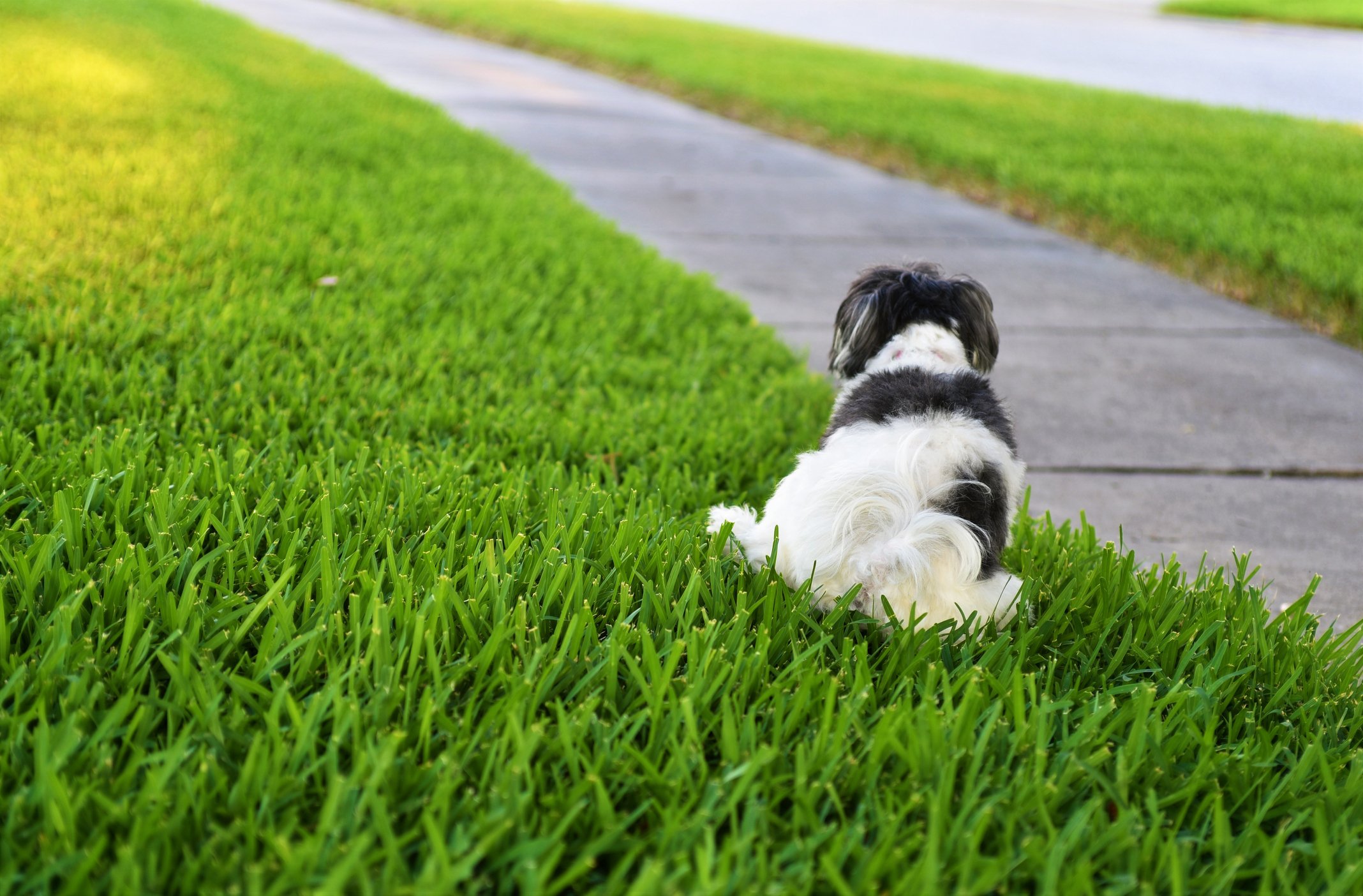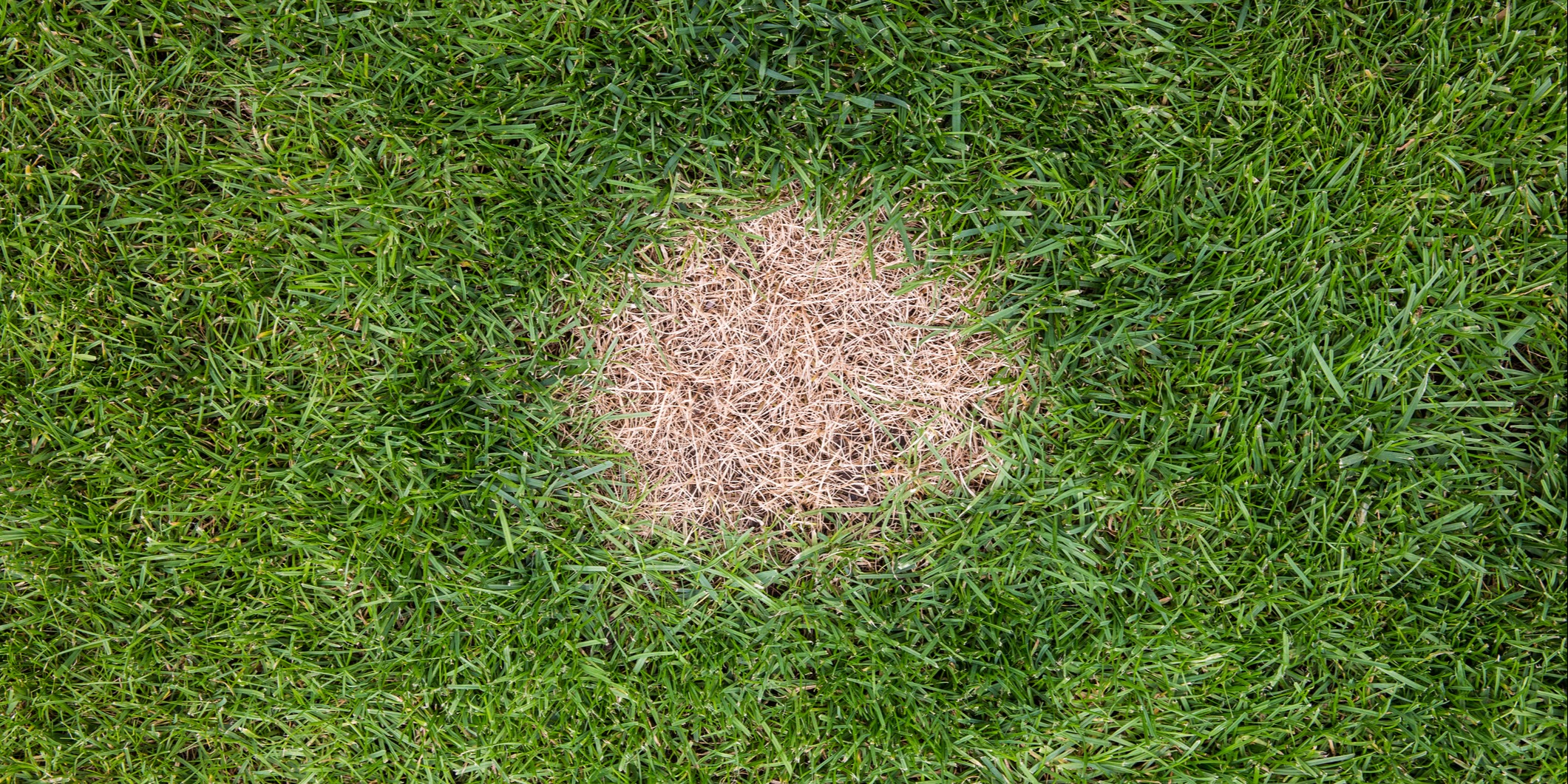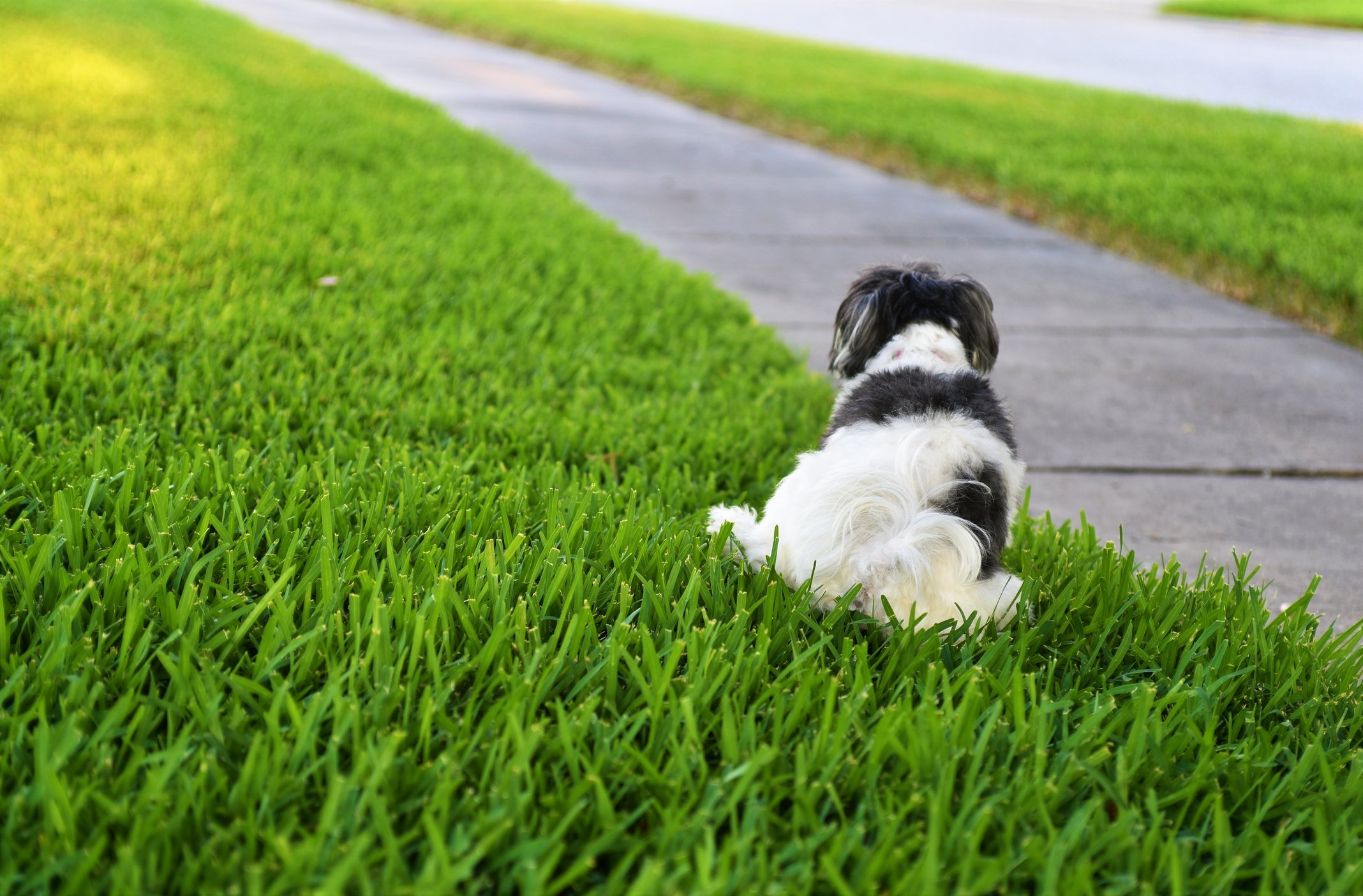
"No Lassie, not on OUR LAWN!"
Lawn damage caused by dog urine is not only an unsightly problem but also a common one. Damage caused by pets may sometimes be confused with damage caused by plant diseases that produce similar patch-like symptoms, which can be frustrating and difficult to prevent from happening.
If nature keeps calling your dog to your lawn, you'll want to read on and learn more about our guide to pet damage.
SYMPTOMS
Symptoms of dog urine damage include an area of necrotic tissue surrounded by a margin of a very healthy, dark green grass. Often damage is most noticeable after snow cover is removed from an area that has been used regularly by dogs.
DAMAGE
The soluble salts contained in animal urine can kill turf grass when deposited in high concentration, in one location. Often more severe damage is noticed when female dogs have urinated in an area. Due to squatting while urinating, they are probably depositing a greater amount of urine in one concentrated spot. In contrast, male dogs spread out their urine when marking their territory in several different spots. However, both male and female dogs can cause this damage. The damage is most severe on dry, infertile soil.

MANAGEMENT STRATEGIES
Applying large amounts of water to the area will aid in dispersing the salts and reduce the amount of damage seen. Keeping lawn at 2.5-3” in height will help reduce or mask the damage.
- Designate specific areas preferably non-turf areas such as gravel, mulch, or unmaintained areas and train your dog to do its business here.
- If you do not have any non-turf areas for your pet to do its business, select low profile locations that will not be a noticeable aesthetically.
- Flush areas immediately with water after your pet has done its business, this will help dilute the concentration of nitrogen.
- Encourage your pet to drink lots of water, increased water consumption will help dilute the urine reducing the potential for damage.
- Reduce stress on your lawn by following the recommended mowing practices and irrigation requirements.







